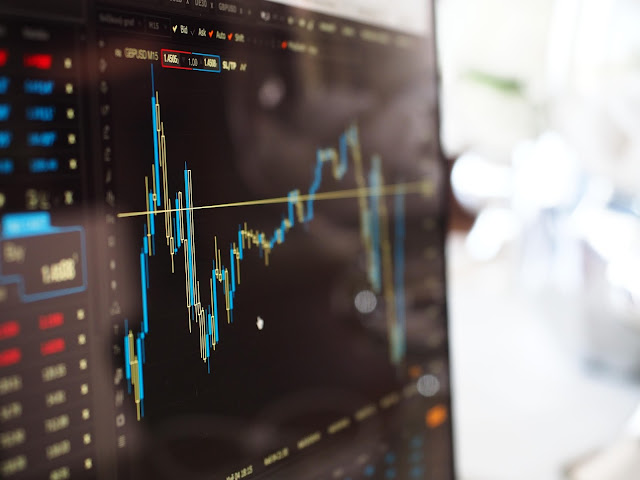The Fed -- not so much "cautious" as "cooing like a dove"…
ref: - "Fed Keeps Interest Rates Unchanged; Signals No More
Increases Likely This Year”, The Wall Street Journal
We're pointing you towards this WSJ
article but frankly, any respectable financial news outlet would suffice. The
Fed's monetary policy stance is the big news from yesterday, supplanting even
the interminably shambolic Brexit process. The decision to leave rates where
they were coming as absolutely no surprise to anyone of course, but the dovish
nature of Chairman Powell's statement and of what was revealed about the Fed's
current thinking was a bit unexpected for many observers. The so-called
"dot plot" indicated that of the 17 members of the Fed's Open Market
Committee responsible for policy, no less than eleven now believe that there
will be no more hikes this year. Seven of them can't see one in 2020 either, up
from just two at the last Fed meeting.
Moreover, the pace of the Fed's balance
sheet reduction -- the "quantitative tightening" process by which the
Fed is reducing its holdings of US Treasuries and mortgage-backed securities
(MBS) -- is to be halved from its current rate of $30bn in Treasuries per month
in May and halted entirely after September. It will continue to let $20bn in
MBS to roll off per month as they mature, but after September will re-invest
the proceeds back into Treasuries -- which both calls a net halt to balance
sheet reduction and helps the Fed in its goal of rebalancing the balance sheet
more towards Treasuries.
Such a significant adjustment in the
Fed's position was certainly not widely expected, and it had some equally
significant market effects. US Treasury yields tumbled further, with the 10yr
falling from 2.61% to 2.53% yesterday and now trading at 2.51%. Global yields
followed and investors are keeping a close eye on the 10yr German Bund in
particular, where the yield is now less than 0.05% and is approaching the
psychologically crucial zero level last seen in October 2016. The US Dollar
took its cue from the lower rate scenario and fell out of its recent trading
range.
If such action was an entirely
predictable reaction to what the Fed had to stay, the moves in stocks were less
straightforward. Much of this year's recovery from the sharp falls at the end
of 2018 has been based on perceptions of a more cautious, less hawkish Fed, and
after the announcement stocks were marked pretty sharply higher… but only
briefly. What a lower rate environment, and a higher possibility of a
yield-curve inversion, might mean for bank profitability caused the financial
sector to put a brake on things, and most indices in fact ended down on the
day.
It's tempting to think that stock prices
may have reversed yesterday as investors took a wider and more considered view
about what the Fed's move, or lack of it, says about the global and domestic
headwinds that are causing growth forecasts to be marked lower. Don't bank on
it, however… particularly in recent years, stock markets have been all too
ready to be encouraged by a more accommodative policy scenario without thinking
too much about the adverse conditions that provoked it. Still, the Fed is
plainly worried about the factors that are reducing their growth projections.
More specifically, they seem most concerned with the lack of inflationary
pressure -- something that can only get worse if growth slows.
Lack of inflation discourages companies
from investment and consumers from spending. We spoke not so long ago about
"Japanification", which refers to the low growth and low/zero/minus
inflation hole that Japan has been struggling with for decades. All other
nations would like to avoid the same fate, and the Fed is said to be
considering whether it might tolerate short-term rises in the inflation rate
above its 2% target. Though politically contentious, the argument goes that
such a plan would be balanced by the long periods of mostly below-target
inflation of the recent past and would go a long way to breaking the stubborn
grip of low inflation.
True or not, the more dovish position
taken by the Fed is certainly understandable. The trouble is that many take the
view that in the modern world where central banks have less ammunition at their
disposal, monetary policy can only achieve so much -- look at Japan, for
goodness sakes. There's a growing belief that fiscal stimulus will be required
alongside its monetary cousin, and that's in the hands of politicians, not
central bankers. The marriage between those two groups is not always happy, but
assuming a plan could be agreed in principle, the central bankers would then
have to ensure that any fiscal stimulus was suitably broad-based and of
long-term benefit… infrastructure projects say.
What is NOT required is short-term,
market-boosting tax cuts aimed at the top brackets. We've seen some of those
very recently put in place by you-know-who… and sure enough, it looks like the
sugar rush they provided is running out of steam already.



No comments